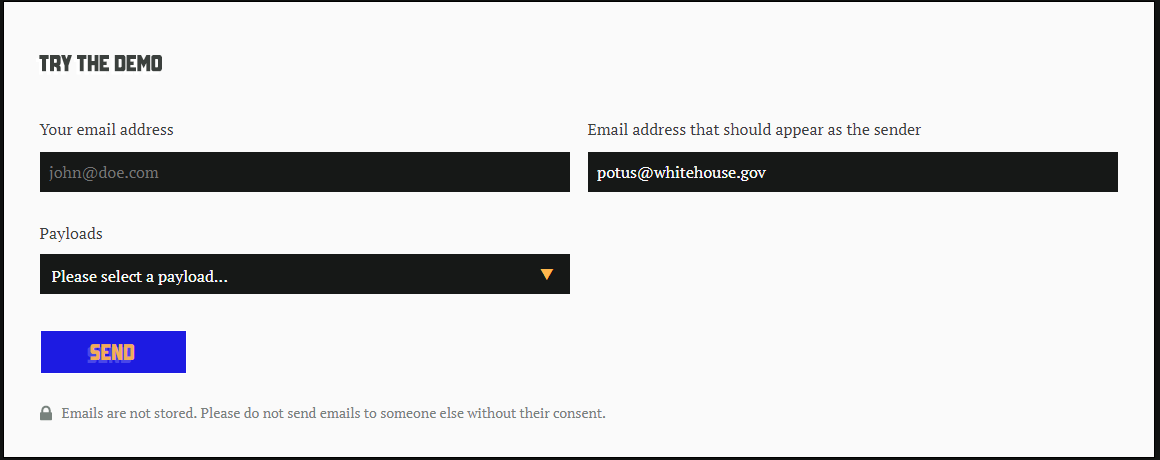Mailsploit Creates Undetectable Spoofed Emails
Security researcher Sabri Haddouche recently reported a collection of critical bugs in major email clients. Exploiting these vulnerabilities could allow an attacker to spoof virtually any email address and bypass detection.
Dubbed Mailsploit, this group of vulnerabilities affects over 30 different mail clients, including prominent applications like Apple Mail, Microsoft Outlook, Mozilla Thunderbird, and Yahoo! Mail. When vulnerable clients are sent fraudulent emails using Mailsploit, they appear to come from completely legitimate senders. In his demo, Haddouche successfully sent an email that appeared to come from ‘potus@whitehouse.gov’.
The Mailsploit page indicates that only 24% of the affected clients have provided fixes as of December 5, which leaves users of numerous other email clients vulnerable to attacks using fraudulent Mailsploit emails. The researcher provides a document tallying the responses of each of the affected products.
Users of vulnerable clients are exposed to a wide range of possible email attacks. BEC scams become much easier to execute because employees won’t be able to distinguish if the email is coming from their boss or a fraudster. Employees are unlikely to question instructions from an email address they recognize as the company CEO’s.
Over the years, email clients have become much smarter about separating spoofed emails from legitimate ones. The authentication protocol Domain-based Message Authentication, Reporting & Conformance (DMARC) is designed to filter out spoofed emails by detecting if the activity is legitimately coming from the sender. According to the researcher, Mailsploit circumvents anti-spoofing mechanisms like DMARC by taking advantage of an old protocol that prescribes how the applications read and display the sender’s email address.
Haddouche's analysis indicates, “In an email, all headers must only contain ASCII characters, including the “From” header. The trick resides in using RFC-1342 (from 1992!), a recommendation that provides a way to encode non-ASCII chars inside email headers in a such way that it won't confuse the MTAs processing the email. Unfortunately, most email clients and web interfaces don’t properly sanitize the string after decoding which leads to this email spoofing attack.”
The email providers were notified of the vulnerabilities months before the release of the report, and as mentioned above, some have fixed the problem. But for all users, now more than ever, it is important to practice safe email habits. Here are some tips on how to keep your mail secure:
- Verify the sender and evaluate the emails you receive—if you aren’t expecting an email from that particular sender, check if it is a legitimate email before replying. Try to contact the sender through other means.
- Keep your applications updated. The email providers were forewarned about Mailsploit to give them time to work on solutions. Make sure you have the latest versions of the apps you use to defend against exploitable bugs and vulnerabilities.
- Enterprise security professionals should adopt security measures such as Sender Policy Framework (SPF), Sender ID, and DomainKeys Identified Mail (DKIM) to protect their organizations from spoofing and other email threats.
- Stay vigilant. Educate yourself on the latest threats, and spread the word to others on your network.
Like it? Add this infographic to your site:
1. Click on the box below. 2. Press Ctrl+A to select all. 3. Press Ctrl+C to copy. 4. Paste the code into your page (Ctrl+V).
Image will appear the same size as you see above.
Recent Posts
- Estimating Future Risk Outbreaks at Scale in Real-World Deployments
- The Next Phase of Cybercrime: Agentic AI and the Shift to Autonomous Criminal Operations
- Reimagining Fraud Operations: The Rise of AI-Powered Scam Assembly Lines
- The Devil Reviews Xanthorox: A Criminal-Focused Analysis of the Latest Malicious LLM Offering
- AI Security Starts Here: The Essentials for Every Organization


 Complexity and Visibility Gaps in Power Automate
Complexity and Visibility Gaps in Power Automate AI Security Starts Here: The Essentials for Every Organization
AI Security Starts Here: The Essentials for Every Organization The AI-fication of Cyberthreats: Trend Micro Security Predictions for 2026
The AI-fication of Cyberthreats: Trend Micro Security Predictions for 2026 Stay Ahead of AI Threats: Secure LLM Applications With Trend Vision One
Stay Ahead of AI Threats: Secure LLM Applications With Trend Vision One